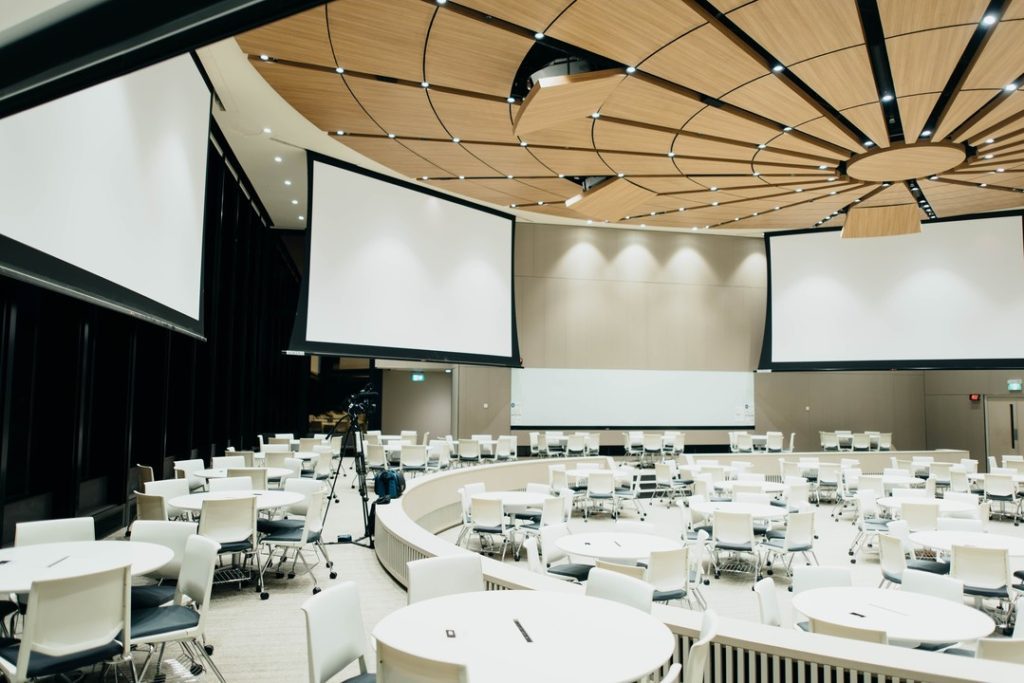The global pandemic has changed the way we currently work, and how we will work from now on. Even when this challenge has passed, companies will undoubtedly allow staff to work from home as needed, hire more remote staff, and even engage with customers differently.
While this might mean less demand for commercial office space (at least in the near-term), it also means those office spaces will be used in new ways.
1. Onsite For A Day
Staff at companies with flexible remote work policies will have fewer assigned workspaces. Offices will be configured to accommodate “drop-in” staff with their pick of locations in the space. This will enable staff to work in the environment that’s most comfortable for them and where they can be their most productive.
Huddle rooms for brief and often informal meetings are already a fixture in many offices. More such spaces will become the norm, with shared displays to facilitate screen sharing.
2. Plug-In And Go
The increased use of huddle rooms means every one of them will require plug-and-play accessibility. The connections for sharing video should be obvious but not intrusive. The controls must be completely intuitive, requiring zero orientation to understand and use.
Ideally, such controls are touchscreen-based control systems that communicate to the components in the solution. This assures that remotes won’t get lost or have batteries that die. This also means they can be attached and positioned in a clean and sleek way, eliminating cable clutter.
Automatic, motion-sensitive systems are also available for this purpose that is activated when users enter the room. This simplifies the configuration process considerably and frees more time to get work done. It also welcomes users into spaces for a seamless user experience.
3. Getting Together
For team meetings that include remote staff, conference rooms will increasingly need to accommodate video and audio conferencing capabilities. This means larger displays and audio systems that deliver clear voice communications. Ideally, such systems will be integrated with the video and audio conferencing technology so they can be managed just like any other video chat or telephone call.
Because such rooms get used less frequently, the controls need to be as intuitive as possible for users to start their meetings on time and focus on the task-at-hand. The same touchscreens used in huddle rooms can work here too. And the automatic, motion-activated systems are the best for such use cases.
4. Projecting Company Culture, Literally
With fewer employees coming to the office every day, companies will want to make sure those visits foster the most team spirit possible. This can be done via internal broadcast channels that deliver dynamic content to strategically located displays. Such information can include stock price, sales metrics, significant business news (like accounts won or milestones achieved), and even videos or slide shows from team spirit events.
Such content gives workspaces a sense of life even if fewer people are on the premises on any given day. In so doing, they also lift the energy level for the people who are there, which also helps boost productivity and loyalty.
5. The Center of Gravity
Whether it’s the lobby, the breakroom, a central corridor, or someplace else that everyone passes through, a monumental AV element can give the office a real sense of place. Projection systems or video walls are particularly good for this if this space will accommodate it.
This is a variation on the company culture application above, but it serves a different function. This gives the office a sense of specialness and place. If an office is no longer the place where everyone comes to work, it needs to be more than a way station. In public spaces, this role is filled by a statue or a fountain. In the new workspace, AV can supply this welcome… and allow it to stay fresh.
The new work style has been enabled by electronic displays and sound systems. The better a company is at leveraging this technology, the more likely they are to succeed in this new world.



